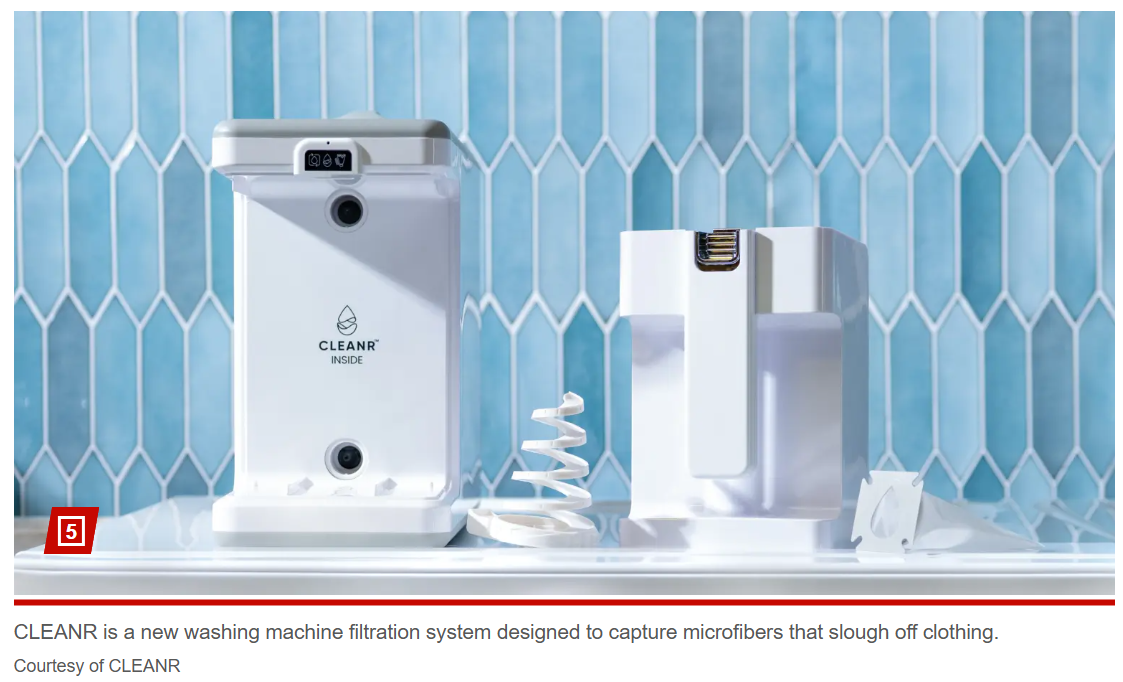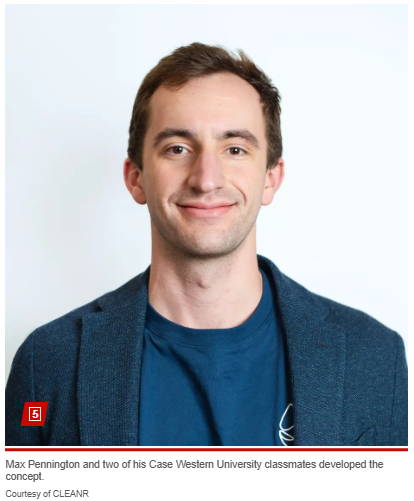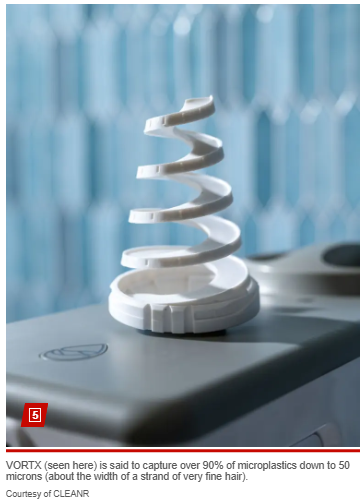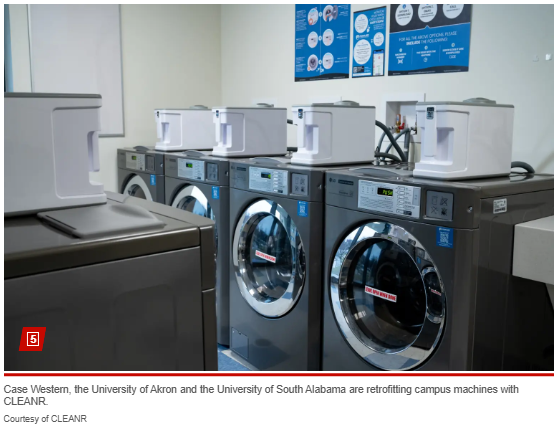May 23, 2025
Microplastics are everywhere — new device yanks them from your laundry
By Tracy Swartz
Published May 23, 2025, 6:00 a.m. ET
Not to be knit-picky, but laundry is a major contributor to microplastic pollution.
Synthetic fabrics like polyester and nylon shed tiny fibers during the wash cycle that can pass through standard wastewater treatment and end up in waterways.
Now, three Case Western Reserve University engineering alumni have fabricated a special washing machine filtration system to capture microplastics. CLEANR technology is rolling out at three universities while selling online for home use.
“It just turned into this project where we realized [that] microplastics seemed like they’re going to be a big issue,” CLEANR co-founder and CEO Max Pennington, 24, told The Post. “We were passionate about [spending] our free time, really, whenever we could, to develop this technology.”
Microplastics are a pressing problem because they are literally everywhere — from personal care products to car tires and even food and water.
These minute particles have been linked to a laundry list of concerns, including a higher risk of heart attack, stroke and certain cancers and potential damage to reproductive, digestive and respiratory health.
Pennington and his fellow Sigma Chi fraternity brothers David Dillman and Chip Miller took their bright idea to Sears think[box], a 50,000-square-foot facility at Case Western in Ohio and one of the largest makerspaces in the US.
The Princes of Tide started printing prototypes, which went through the wringer.
“They actually flooded their mother’s kitchen,” recalled Terry Moore, executive chairman of CLEANR.
“Then they were trying it out in the washing machine in their fraternity house, and it was working somewhat,” he continued, “but then they found out it really didn’t work when the baseball players threw all their wash in there, with all the dirt and gravel.”
The grime-fighting trio turned to nature to iron out their issues. They thought about how manta rays use vortex dynamics to keep their gills from clogging while filtering food from water. Thus, VORTX was born.
VORTX, which resembles a small tornado, sits inside CLEANR’s external filter.
The apparatus looks like a fancy coffee maker. It’s installed on the washer’s drain hose to filter the dirty water exiting the machine.
VORTX is designed to capture over 90% of microplastics, down to the size of 50 microns (about the width of a strand of very fine hair), and push this waste into a pod that can be removed and tossed.
The CLEANR team figures that one filter prevents the equivalent of 56 credit cards worth of plastic from entering waterways each year. The CLEANR app lets customers estimate their impact.
There are other washing machine filters on the market — Pennington said the CLEANR technology “not only captures the microplastics but provides a consumer experience that [allows users to] feel like they’re making a difference.”
Moore said they have raised over $7 million from friends and family to get CLEANR to market.
Seed money from a Case Western start-up competition helped purchase the team’s first washing machine.
Now, they have an army of washers and dryers in the think[box].
The sudsy buds are seeking partnerships with washing machine manufacturers to integrate their filters into the machines during production.
In the meantime, Case Western, the University of Akron and the University of South Alabama are retrofitting campus machines with CLEANR.
It’s good timing — just this year, France began requiring new washing machines to have a filter to catch microfibers. Other governments have considered similar measures.
The California legislature passed a bill that would have mandated microfiber filtration systems in new residential and state-use washing machines, but California Gov. Gavin Newsom vetoed it in 2023. He cited concerns about consumer costs.
A New Jersey Senate bill introduced in September would require washing machines sold on or after Jan. 1, 2030, to have filtration systems that collect microfibers and microplastics.
The legislation, which was referred to committee, noted that, “in addition to harming marine wildlife and the ecosystems that our communities depend on, microplastics enter our bodies in the food we eat, the water we drink and in the air we breathe.”
About CLEANR
CLEANR builds best-in-class microplastic filters for washing machines that effortlessly remove the largest source of microplastics into the environment. Its technology, VORTX, represents a breakthrough in filtration, with a patent-pending design that is inspired by nature and proven to outperform conventional filtration technologies by over 300%. The company is building a platform filter technology that enables product manufacturers and business customers to materially reduce their microplastic emissions from impacted in-bound and out-bound fluid streams, including residential and commercial washing machine wastewater, in-home water systems, wastewater treatment, textile manufacturing effluents, industrial wastewater, and other sources. www.cleanr.life
Contact:
More on CLEANR
CLEANR
March 31, 2025
CLEANR and The 5 Gyres Institute Partner to Fight Microplastic Emissions from Washing Machines—A Major Source of Microplastic Pollution
CLEANR and The 5 Gyres Institute have joined forces to advance science-driven solutions to microplastic pollution from washing machines—one of the largest sources of microplastics in the environment.
CLEANR
Feb 25, 2025
The Shaw Institute Validates CLEANR for Washing Machines is Over 90% Efficient in Removing the #1 Source of Microplastics into the Environment
The Shaw Institute certifies CLEANR washing machine filter as over 90% efficient capturing microplastics at 50-microns.
CLEANR
Sep 12, 2023
CLEANR’s New Microplastic Filters Win Six ‘Best of IFA 2023’ Awards at the World’s Largest Appliance Industry Conference
CLEANR wons six “Best of IFA 2023” awards after debuting its breakthrough microplastic filters for washing machines.










